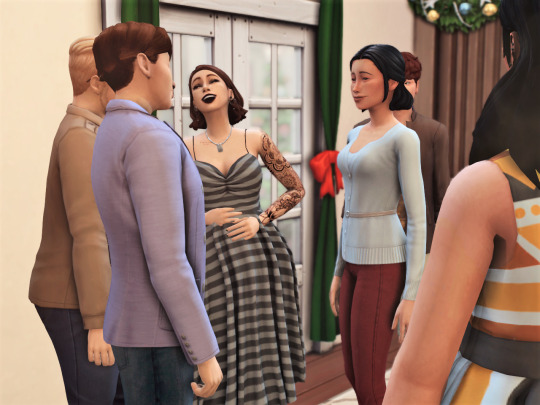#cedric canfield
Explore tagged Tumblr posts
Photo
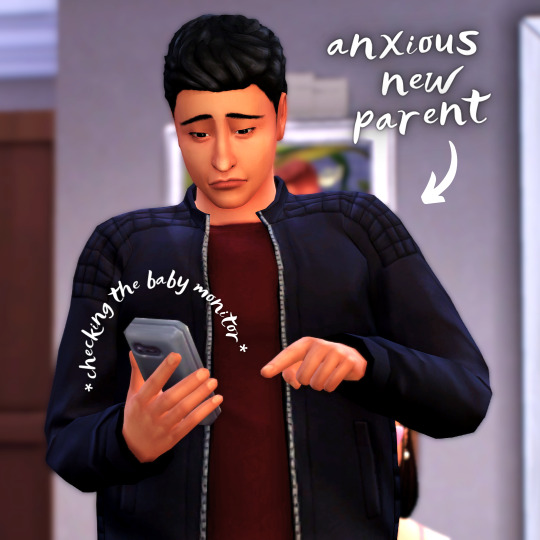

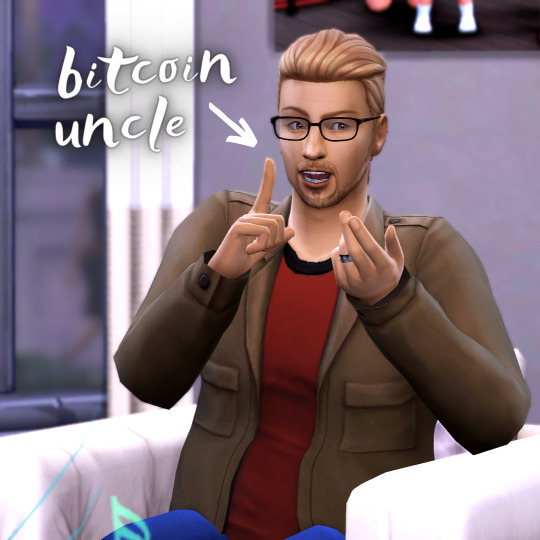
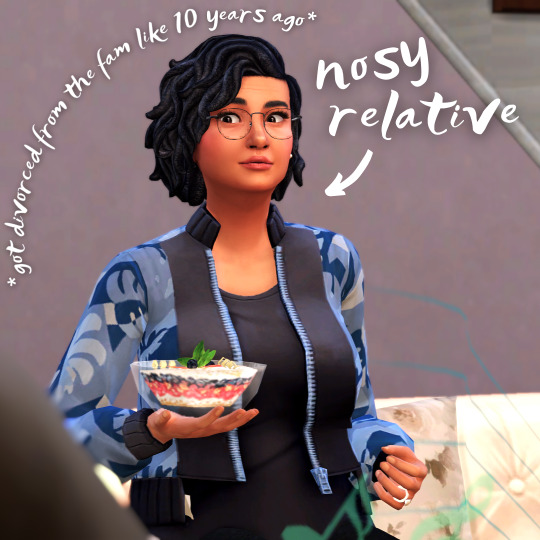
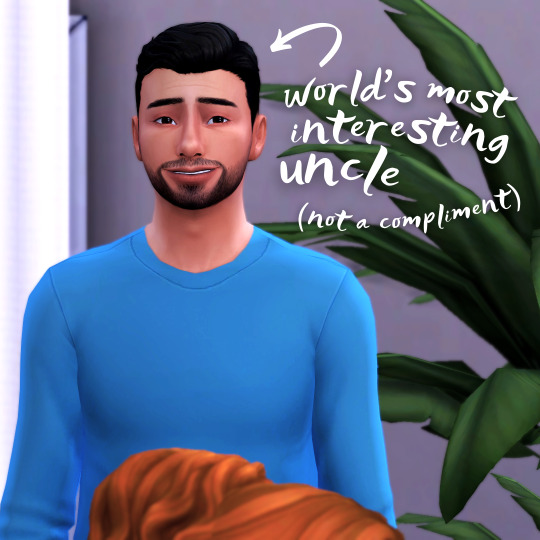

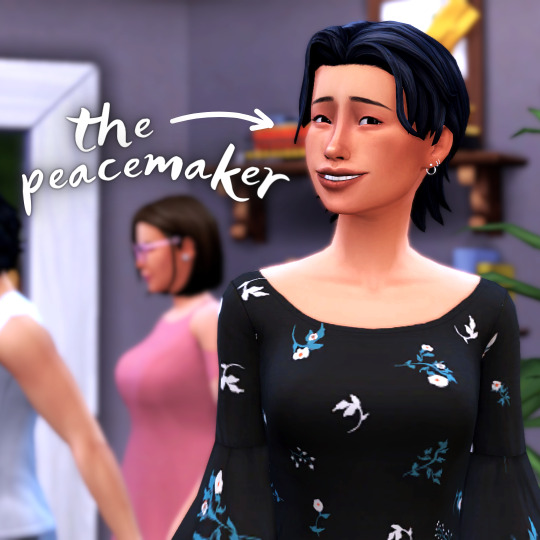
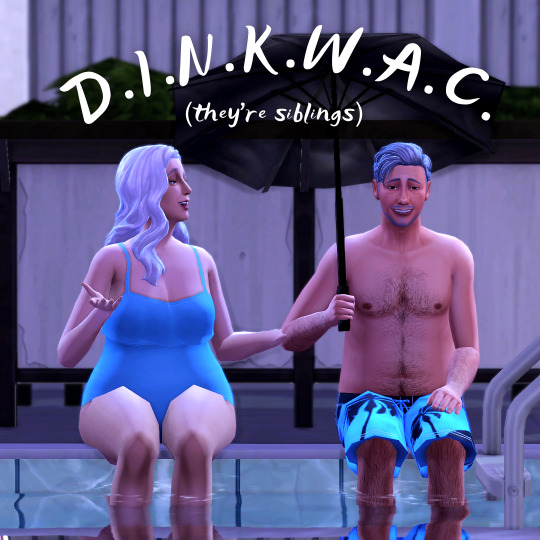

I couldn’t’ve planned this better myself.
[Family Reunion CAS Challenge by @faerie-tempest]
#ts4#simblr#sims 4#ts4 gameplay#SimsFamilyReunion#100 baby challenge#brody canfield#bentley canfield#jamison canfield#jordon canfield#macie raha#cedric canfield#otto ferraro canfield#ariel canfield#maddison canfield#lukas canfield#canfield#gosh this family is massive#100bc: gen1
6 notes
·
View notes
Text
March 2023 Books
(@lady-merian I do talk about reading the first L&C book, please feel free to ignore)
The In-Between by Rebecca Ansari
A fascinating fantastical premise to account for a real-world case of missing children. A bit dark but I did enjoy reading this.
The Secret Garden by Frances Hodgson Burnett (reread)
Annual reread! You all know how I feel about this book.
The Secret Garden: The Cinematic Novel by Linda Chapman (reread)
Reread after watching the movie again, because I was curious how they compare. I originally read this before the movie came out. There were definitely parts of the novelization that are absent in the film, and the book does a more thorough job of explaining this. But on the whole they are pretty similar.
Understood Betsy by Dorothy Canfield Fisher (reread)
I remember reading an excerpt from this book in one of our elementary school readers. It's been a while since I read the whole book, but I enjoyed it more than I expected. I wish I had read it as a child.
The Secret Garden of Yanagi Inn by Amber A. Logan
The Japanese setting was this book's strength. As a retelling, however, I didn't love it. It transformed the story into a generic tale of a rather bland woman processing her grief and working through baggage from her past while on a mysterious photography job in Japan. It retained the basic beats of TSG but not so much the spirit of the story (which is not about healing from grief, why is that so hard to understand) or characters.
Messenger and Son by Lois Lowry
I don't know what the heck is going on in these stories' universe, and Messenger was rather bizarre and depressing, but Son had some interesting themes and proved a satisfying ending to the series.
The Humming Room by Ellen Potter (reread)
Reread for TSG season.
I love this retelling, but this time it struck me that I'm not especially crazy about Potter's choices in depicting her Dickon analogue. He's clearly designed to be a heartthrob (brooding nature boy! mysterious past! possibly one of the fae! ponytail!), maybe more that than a parallel to Dickon's actual role in the original. It doesn't ruin the book for me at all, but this time...I was kind of mentally rolling my eyes.
The Making of May by Gwyneth Rees
I wouldn't call this a retelling of TSG, because it isn't, but it interacts with that text and draws inspiration from it. The young heroine is particularly attached to a film version of TSG (clearly the 1975 miniseries) that she has on VHS, she identifies a lot with Mary, and like Mary she has a lot of growing to do in a mysterious old house with walled gardens. A more enjoyable book than I expected.
A Bit of Earth by Karuna Riazi
A retelling of TSG in a modern setting with a Pakistani heroine coming to live in Long Island. The cultural setting and many of the plot points are significantly different from the original, but very much in the same spirit. Riazi clearly loves and respects the original text while breathing her own fresh life into it. The blend of poetry interspersed with the prose that forms the majority of the narrative is a bold but effective choice. It enhances the emotion and gives insight into the heroine that we wouldn't have otherwise. I enjoyed this one more than I expected. Thank you for the recommendation, @allieinarden!
Whose Body? by Dorothy L. Sayers (reread)
Reread in a rush for a reading group.
The Chestry Oak by Kate Seredy
Seredy's books take me off guard with how powerful they can be. This one was no exception.
A Secret Princess by Margaret Stohl and Melissa de la Cruz
This was not good. I knew it was not going to be good. I read it anyway. I regret that.
A retelling should honor the spirit of the original while bringing something fresh and original to the story. This book did not do that. This Sara, Mary, and Cedric bore almost no resemblance to their original counterparts, and themes from Burnett's stories are discarded, even disdained. For some reason, the story is set in the 1860s, decades before Burnett's books were published/set, but little or no historical research seems to have been done, and the result was not very believable in its portrayal of nineteenth-century England. The plot is all over the place, and the romances are painfully forced. I was not impressed.
The Screaming Staircase by Jonathan Stroud
I really liked it! (...maybe not for the same reasons as everybody else, sorry, I am not swooning over anyone.) Stroud's prose is fantastic, and he turns the most effortlessly inventive similes. The characters are well-developed, and the story, even though it's not the type of plot I would normally seek out, is quite readable. I plan to finish the series.
The Secret Garden on 81st Street by Ivy Noelle Weir (reread)
Reread for TSG season.
A Treason of Thorns by Laura E. Weymouth
A friend has been on my case about forming a book club between the two of us, and she wanted me to pick the first book, something I hadn't read before. I arbitrarily selected this one, which was on my shelves. I regretted it. I wanted to love it, it has such a pretty cover, but I couldn't connect with the heroine and her motivations, and the pseudo-historical setting was distractingly implausible for me.
Mystery of the Black Diamonds and Mystery of the Green Cat by Phyllis A. Whitney
Black Diamonds hasn't aged well and has a bit of a far-fetched plot, but Green Cat was quite enjoyable. I appreciate how Whitney weaves her mystery plots with more interpersonally-focused plots that bring additional investment in the characters.
11 notes
·
View notes
Text
Using Grand Jury Testimony, ‘Ferguson’ Stage Play Debunks Media Narratives
NEW YORK – When it came time for Darren Wilson to testify about what happened after firing his gun from inside his vehicle, the Ferguson, Missouri, police officer told the grand jury that his assailant “had the most intense, aggressive face.”
Wilson, then 28, is the white police officer who fatally shot Michael Brown, an 18-year-old black male on Aug. 9, 2014, in Ferguson, a northern suburb of St. Louis.
It’s all part of the stage play performance of “Ferguson,” which ran from Oct. 23 through Nov. 5 at the 30th Street Theater, located between 7th and 8th avenues in New York City, makes use of a storytelling technique known as “verbatim theater.”
The Advantage of Verbatim Theater
All of the play’s dialogue is taken verbatim from the 25 days of grand jury testimony. Phelim McAleer, the Irish-born filmmaker and investigative journalist who wrote the play, has launched a crowdsourcing campaign to help finance the play’s production, which expired on Nov. 9. If enough funds are raised, the play could be restaged.
“This is as much about journalism as it is about the activists involved with the Ferguson incident,” McAleer told The Daily Signal after the Saturday afternoon performance of the play. “This is about checking primary sources and looking into what these people actually saw and not what they said they saw. That’s something many journalists failed to do.”
The media narrative built around the widely reported “Hands up, don’t shoot”scenario that fueled protests from Black Lives Matter and other groups directed against the police was contradicted by key witnesses and by physical and forensic evidence, according to what the grand jury heard.
The confrontation between Wilson and Brown “took place over an approximately two-minute period of time at about noon,” according to a U.S. Department of Justice report on the shooting. Brown had stolen several packages of cigarillos from a nearby convenience store a few minutes earlier and had strong-armed the store clerk when the clerk tried to stop him, the report explains.
Wilson’s radio transmissions and dispatch records make it clear that he was aware of the robbery and had a description of the suspects.
The police officer first encountered Wilson and his friend, Dorian Johnson, 22, when they were walking eastbound on Canfield Drive in the “middle of the street,” according to the Justice Department report.
After Wilson noticed that Brown had cigarillos in his hand and that Johnson was wearing a black shirt, consistent with the description he had of the suspects, the police officer reversed his vehicle and then angled the vehicle to cut Brown and Johnson off in the street. That’s what Wilson told prosecutors and investigators, that’s what he said in his testimony to the grand jury and that’s what it says in the Justice Department report.
Of all the witnesses, McAleer said he was particularly impressed by Ciara Jenkins, a young black woman, who was positioned behind Wilson and Brown in the moments leading up to the shooting.
“What she delivered was just incredibly powerful,” McAleer said. “She had been avoiding the subpoena and didn’t want to testify, but when she did, she said Michael Brown did not raise his hands to surrender and that he charged the officer. This is a very intense, emotional part of the play. But that’s what’s in the grand jury testimony, and the media did not tell the truth about what happened.”
Philadelphia College Students Bail Out at Last Minute
“Ferguson” is a 90-minute courtroom drama unfolding in one room on stage with 13 actors and with some of those actors playing multiple roles.
A staged reading of the play was first presented in 2015 in Los Angles, but nine of the cast members walked out in protest over the script. None of the New York City cast members walked out, but the Saturday afternoon performance did not escape controversy. A representative from the Community College of Philadelphia had contacted McAleer to see if accommodations could be made for about 50 students. McAleer obliged, but he was informed on Saturday morning that almost all of students had decided to back out at the last minute.
The Irish playwright explained what went down in an email that was sent to The Daily Signal and other interested parties.
“I was really excited, and so were the cast, so I organized a group discount and a Q&A afterwards with the cast and myself so we could all discuss the issues raised by the play,” McAleer said in his email. “I thought the students would really benefit to hear verbatim what went on in the grand jury room during the Michael Brown investigation. In the end, 53 tickets were booked — almost all the house.”
A handful of students from the college did show up individually.
In the email McAleer received from the college’s representative, he was informed that “almost all of the students decided not to come because of the controversy surrounding the play,” he explained in his own email commenting on the incident.
“Don’t forget Ferguson is verbatim theater. It creates the drama using only actual words from the grand jury transcripts,” McAleer continued. “That is what these snowflake students were afraid of—the actual words of eyewitnesses—and many of these witnesses were minorities.
“What kind of country is this where students are scared of the ‘controversy’ created by the verbatim re-creating of minority voices?”
The Daily Signal contacted the college representative who had been in touch with McAleer to ask if he wanted to comment for this article, but the representative did not respond.
Standout Performances Capture Divergent Testimony
Brown was under the influence of marijuana at the time of his confrontation with the police officer, a forensic toxicologist told the grand jury.
“I can tell you the drug is present at a significant concentration that represents a large dose into Mr. Brown,” Dr. Brian Wilcox said in his testimony. “How he would have behaved and what he would have done, I cannot predict. I know the drug was having an effect and was impairing his nervous system.”
Ian Campbell Dunn, a native of Nashville, Tennessee, played the part of Officer Wilson. He poured a lot of emotion and intensity into his performance and even stepped off stage and into the audience during the climactic, final moments of the play.
“There’s a difference between simply retelling the story and reliving it,” Dunn told The Daily Signal. “As an actor, you are trying to bring out the humanity of each individual involved.”
The altercation reached a critical turning point when Brown reached into Wilson’s car, punched the officer several times, grabbed the officer’s gun and attempted to get control of the weapon, according to Wilson’s testimony.
This happened after Wilson had tried opening his car door, only to have Brown slam it shut, the officer said in his testimony.
Johnson, the 22-year-old who accompanied Brown that night, said in his testimony that “the first, initial contact” Wilson and Brown had was when the officer’s “arm came out of the window” and “grabbed a hold of Big Mike’s shirt around the neck area.”
Cedric Benjamin, who is from Florida and moved to New York to pursue a career in acting, played the part of Johnson. He sympathizes with his subject.
“Throughout the entire process, Johnson is the only one who is really unbiased,” Benjamin told The Daily Signal. “He sees Mike [Brown] stealing in the store, and he testifies about what happened and what he saw, but what happened in the store and what happened with the shooting were two different incidents.”
Benjamin used highly pronounced facial expressions as part of his portrayal of Johnson to help capture his subject’s growing anxiety while he was being questioned by lawyers.
Johnson acknowledged in testimony that he had his own checkered history with the law and had been in jail before. When he recognized that “Big Mike” was not going to pay for the cigarillos, Johnson said in testimony that he tried to exit the store because he “didn’t want any part of it.”
Johnson also saw that “Big Mike kind of reverses the grab” when the store clerk tries to stop him.
“The grand jury was there to determine if there was enough evidence to go to trial,” Benjamin told The Daily Signal. “That was the purpose, but the entire time it just felt like the lawyers were prosecuting Michael Brown. The injustice of the justice system is the story that needs to be told.”
The testimony of Wilson and Johnson diverge sharply. Wilson tells the grand jury that it was Brown who reached into the police vehicle.
There was physical and forensic evidence presented to the grand jury that backs up Wilson’s version of events. McAleer told The Daily Signal he does not view Johnson as a credible witness.
“Johnson was caught several times telling stories that just didn’t hold up under scrutiny,” McAleer said. “When he said the officer reached out of his car to grab Michael Brown, he was describing a physical action that defied common sense and one that didn’t happen.”
Oliver D’Anna, 13, a precocious eighth-grader from Westport, Connecticut, with an acute interest in theater, wanted to know why Wilson didn’t just drive off when the situation escalated.
“Why didn’t he just push on the gas pedal and drive away?” D’Anna asked. “It seems like he could have done something to avoid the situation.”
Finally, after the shots were fired, Wilson is able to exit his vehicle and pursue Brown on foot while calling for backup.
Jenkins, the witness who made a strong impression on McAleer, was in a minivan with her family members when the final confrontation leading up to the shooting takes place. Jenkins tells the grand jury that Brown did not raise his hands to surrender and continued to charge the officer.
“I’m not, you know, really big on talking to the police or defending the police. I’m just being real honest with you,” Jenkins said to one of the lawyers during testimony. “I feel like the officer was in the right, and that is a lot of saying. Because other than that, I ain’t got nothing to do with them.”
In one of his final dramatic testimonies, Wilson describes how Brown kept charging toward him even after Wilson fired his weapon.
“Well, he keeps coming at me after that again, during the pause I tell him to ‘get on the ground, get on the ground,’ he still keeps coming at me, gets about eight to 10 feet away,” the officer said. “At this point, I’m backing up pretty rapidly, I’m backpedaling pretty good because I know if he reaches me, he’ll kill me.”
Dunn, the actor who played the part of of Wilson, expressed skepticism toward the officer’s testimony.
“I personally did not believe him, and I don’t think the shooting was justified,” he said. “The burden should be on the police to defuse the situation. But as an actor, you don’t get to make a choice about whether or not you believe someone. You want to capture as much of what it must have been like in that situation, which was traumatic for everyone involved.”
Benjamin, the actor who played Johnson, sees value in the verbatim approach to theater, but thought more of the verbatim material could be been used to show that Brown was a genuine victim in the shooting.
The Daily Signal asked McAleer if that was an option.
“No such additional verbatim material exists,” he said. “Any more verbatim material I put in would have made Brown look more guilty and Wilson look more innocent.”
Tensions flared after the final performance, when Benjamin asked audience members to activate their smartphones and record his criticisms of the play and what he regarded as an unbalanced presentation of the Ferguson shooting. But Jerry Dixon, the director of the play, interjected, describing Benjamin as “unprofessional” and telling the actor to leave the stage.
Report by Kevin Mooney. Originally published at The Daily Signal.
0 notes
Text
Using Grand Jury Testimony, ‘Ferguson’ Stage Play Debunks Media Narratives
NEW YORK – When it came time for Darren Wilson to testify about what happened after firing his gun from inside his vehicle, the Ferguson, Missouri, police officer told the grand jury that his assailant “had the most intense, aggressive face.”
Wilson, then 28, is the white police officer who fatally shot Michael Brown, an 18-year-old black male on Aug. 9, 2014, in Ferguson, a northern suburb of St. Louis.
It’s all part of the stage play performance of “Ferguson,” which ran from Oct. 23 through Nov. 5 at the 30th Street Theater, located between 7th and 8th avenues in New York City, makes use of a storytelling technique known as “verbatim theater.”
The Advantage of Verbatim Theater
All of the play’s dialogue is taken verbatim from the 25 days of grand jury testimony. Phelim McAleer, the Irish-born filmmaker and investigative journalist who wrote the play, has launched a crowdsourcing campaign to help finance the play’s production, which expired on Nov. 9. If enough funds are raised, the play could be restaged.
“This is as much about journalism as it is about the activists involved with the Ferguson incident,” McAleer told The Daily Signal after the Saturday afternoon performance of the play. “This is about checking primary sources and looking into what these people actually saw and not what they said they saw. That’s something many journalists failed to do.”
The media narrative built around the widely reported “Hands up, don’t shoot”scenario that fueled protests from Black Lives Matter and other groups directed against the police was contradicted by key witnesses and by physical and forensic evidence, according to what the grand jury heard.
The confrontation between Wilson and Brown “took place over an approximately two-minute period of time at about noon,” according to a U.S. Department of Justice report on the shooting. Brown had stolen several packages of cigarillos from a nearby convenience store a few minutes earlier and had strong-armed the store clerk when the clerk tried to stop him, the report explains.
Wilson’s radio transmissions and dispatch records make it clear that he was aware of the robbery and had a description of the suspects.
The police officer first encountered Wilson and his friend, Dorian Johnson, 22, when they were walking eastbound on Canfield Drive in the “middle of the street,” according to the Justice Department report.
After Wilson noticed that Brown had cigarillos in his hand and that Johnson was wearing a black shirt, consistent with the description he had of the suspects, the police officer reversed his vehicle and then angled the vehicle to cut Brown and Johnson off in the street. That’s what Wilson told prosecutors and investigators, that’s what he said in his testimony to the grand jury and that’s what it says in the Justice Department report.
Of all the witnesses, McAleer said he was particularly impressed by Ciara Jenkins, a young black woman, who was positioned behind Wilson and Brown in the moments leading up to the shooting.
“What she delivered was just incredibly powerful,” McAleer said. “She had been avoiding the subpoena and didn’t want to testify, but when she did, she said Michael Brown did not raise his hands to surrender and that he charged the officer. This is a very intense, emotional part of the play. But that’s what’s in the grand jury testimony, and the media did not tell the truth about what happened.”
Philadelphia College Students Bail Out at Last Minute
“Ferguson” is a 90-minute courtroom drama unfolding in one room on stage with 13 actors and with some of those actors playing multiple roles.
A staged reading of the play was first presented in 2015 in Los Angles, but nine of the cast members walked out in protest over the script. None of the New York City cast members walked out, but the Saturday afternoon performance did not escape controversy. A representative from the Community College of Philadelphia had contacted McAleer to see if accommodations could be made for about 50 students. McAleer obliged, but he was informed on Saturday morning that almost all of students had decided to back out at the last minute.
The Irish playwright explained what went down in an email that was sent to The Daily Signal and other interested parties.
“I was really excited, and so were the cast, so I organized a group discount and a Q&A afterwards with the cast and myself so we could all discuss the issues raised by the play,” McAleer said in his email. “I thought the students would really benefit to hear verbatim what went on in the grand jury room during the Michael Brown investigation. In the end, 53 tickets were booked — almost all the house.”
A handful of students from the college did show up individually.
In the email McAleer received from the college’s representative, he was informed that “almost all of the students decided not to come because of the controversy surrounding the play,” he explained in his own email commenting on the incident.
“Don’t forget Ferguson is verbatim theater. It creates the drama using only actual words from the grand jury transcripts,” McAleer continued. “That is what these snowflake students were afraid of—the actual words of eyewitnesses—and many of these witnesses were minorities.
“What kind of country is this where students are scared of the ‘controversy’ created by the verbatim re-creating of minority voices?”
The Daily Signal contacted the college representative who had been in touch with McAleer to ask if he wanted to comment for this article, but the representative did not respond.
Standout Performances Capture Divergent Testimony
Brown was under the influence of marijuana at the time of his confrontation with the police officer, a forensic toxicologist told the grand jury.
“I can tell you the drug is present at a significant concentration that represents a large dose into Mr. Brown,” Dr. Brian Wilcox said in his testimony. “How he would have behaved and what he would have done, I cannot predict. I know the drug was having an effect and was impairing his nervous system.”
Ian Campbell Dunn, a native of Nashville, Tennessee, played the part of Officer Wilson. He poured a lot of emotion and intensity into his performance and even stepped off stage and into the audience during the climactic, final moments of the play.
“There’s a difference between simply retelling the story and reliving it,” Dunn told The Daily Signal. “As an actor, you are trying to bring out the humanity of each individual involved.”
The altercation reached a critical turning point when Brown reached into Wilson’s car, punched the officer several times, grabbed the officer’s gun and attempted to get control of the weapon, according to Wilson’s testimony.
This happened after Wilson had tried opening his car door, only to have Brown slam it shut, the officer said in his testimony.
Johnson, the 22-year-old who accompanied Brown that night, said in his testimony that “the first, initial contact” Wilson and Brown had was when the officer’s “arm came out of the window” and “grabbed a hold of Big Mike’s shirt around the neck area.”
Cedric Benjamin, who is from Florida and moved to New York to pursue a career in acting, played the part of Johnson. He sympathizes with his subject.
“Throughout the entire process, Johnson is the only one who is really unbiased,” Benjamin told The Daily Signal. “He sees Mike [Brown] stealing in the store, and he testifies about what happened and what he saw, but what happened in the store and what happened with the shooting were two different incidents.”
Benjamin used highly pronounced facial expressions as part of his portrayal of Johnson to help capture his subject’s growing anxiety while he was being questioned by lawyers.
Johnson acknowledged in testimony that he had his own checkered history with the law and had been in jail before. When he recognized that “Big Mike” was not going to pay for the cigarillos, Johnson said in testimony that he tried to exit the store because he “didn’t want any part of it.”
Johnson also saw that “Big Mike kind of reverses the grab” when the store clerk tries to stop him.
“The grand jury was there to determine if there was enough evidence to go to trial,” Benjamin told The Daily Signal. “That was the purpose, but the entire time it just felt like the lawyers were prosecuting Michael Brown. The injustice of the justice system is the story that needs to be told.”
The testimony of Wilson and Johnson diverge sharply. Wilson tells the grand jury that it was Brown who reached into the police vehicle.
There was physical and forensic evidence presented to the grand jury that backs up Wilson’s version of events. McAleer told The Daily Signal he does not view Johnson as a credible witness.
“Johnson was caught several times telling stories that just didn’t hold up under scrutiny,” McAleer said. “When he said the officer reached out of his car to grab Michael Brown, he was describing a physical action that defied common sense and one that didn’t happen.”
Oliver D’Anna, 13, a precocious eighth-grader from Westport, Connecticut, with an acute interest in theater, wanted to know why Wilson didn’t just drive off when the situation escalated.
“Why didn’t he just push on the gas pedal and drive away?” D’Anna asked. “It seems like he could have done something to avoid the situation.”
Finally, after the shots were fired, Wilson is able to exit his vehicle and pursue Brown on foot while calling for backup.
Jenkins, the witness who made a strong impression on McAleer, was in a minivan with her family members when the final confrontation leading up to the shooting takes place. Jenkins tells the grand jury that Brown did not raise his hands to surrender and continued to charge the officer.
“I’m not, you know, really big on talking to the police or defending the police. I’m just being real honest with you,” Jenkins said to one of the lawyers during testimony. “I feel like the officer was in the right, and that is a lot of saying. Because other than that, I ain’t got nothing to do with them.”
In one of his final dramatic testimonies, Wilson describes how Brown kept charging toward him even after Wilson fired his weapon.
“Well, he keeps coming at me after that again, during the pause I tell him to ‘get on the ground, get on the ground,’ he still keeps coming at me, gets about eight to 10 feet away,” the officer said. “At this point, I’m backing up pretty rapidly, I’m backpedaling pretty good because I know if he reaches me, he’ll kill me.”
Dunn, the actor who played the part of of Wilson, expressed skepticism toward the officer’s testimony.
“I personally did not believe him, and I don’t think the shooting was justified,” he said. “The burden should be on the police to defuse the situation. But as an actor, you don’t get to make a choice about whether or not you believe someone. You want to capture as much of what it must have been like in that situation, which was traumatic for everyone involved.”
Benjamin, the actor who played Johnson, sees value in the verbatim approach to theater, but thought more of the verbatim material could be been used to show that Brown was a genuine victim in the shooting.
The Daily Signal asked McAleer if that was an option.
“No such additional verbatim material exists,” he said. “Any more verbatim material I put in would have made Brown look more guilty and Wilson look more innocent.”
Tensions flared after the final performance, when Benjamin asked audience members to activate their smartphones and record his criticisms of the play and what he regarded as an unbalanced presentation of the Ferguson shooting. But Jerry Dixon, the director of the play, interjected, describing Benjamin as “unprofessional” and telling the actor to leave the stage.
Report by Kevin Mooney. Originally published at The Daily Signal.
0 notes
Note
26 for the OC ask pls! and since i cannot read and won't let that stop me, i'm going to request 26 for any of your OCs that you'd like to ramble about! (and as a book snob, 23 if you feel like it dhfgjs!)
i also cannot read and won't stop you 🙈 there are three artists and two writers in the canfield family, so i think they're the perfect choice for these questions. (this is my excuse to temporarily bring colette back from the dead.)
-
26. what is your oc’s favorite art movement?

maddison prefers the neo-impressionism movement, and her favorite artist is paul signac! she likes the vibrant colors and the use of reds and oranges and pinks.

colette was very into pre-raphaelite art. she's john william waterhouse's biggest fan. her favorites are the lady of shalott and the lady of shalott looking at lancelot.

matteo leans into suprematism. if he hadn't gone into art, he probably would've studied architectural design, and i think that's evident in the importance of feeling in geometry.
23. which oc dog ears pages? which oc thinks that’s an ABOMINATION?

paula dog-ears the heck out of everything she reads (and writes!). to her, the reading experience is just as much of a story as the story within the pages. what better way to tell the story than marking of the book?

cedric thinks it's an abomination. in his defense, he works in publishing, so the physical book itself is the "art" he spends the most time on. color-coded book tabs and sticky notes for him, thank you very much.
-
oc ask game
#(sforz you are indulging my love for art and books.)#(on a related note i think suprematism looks a lot like my synesthesia - blobs of shapes invoking emotion and movement.)#ask game#quietwaters#100 baby challenge#100bc: gen 1#colette canfield#maddison canfield#matteo canfield#paula canfield#cedric canfield#canfield#lothario
1 note
·
View note
Text



Cedric's twin Chelsey is doing okay. Katlyn, on the other hand, is really struggling—losing her niece and her closest brother in quick succession.
#ts4#simblr#sims 4#ts4 gameplay#100 baby challenge#it's okay bb girl 😢#chelsey and cedric weren't really close despite their twin status. chelsey was always buddies with her older sister whitney#100bc: gen1#canfield#chelsey canfield#katlyn canfield#blanton#it's always confusing to tag katlyn cuz i always tag with the surname given at birth (for consistency's sake)#but she's been married for as long as i've had this blog. so she's always been katlyn blanton in my head. and yet.
3 notes
·
View notes
Text

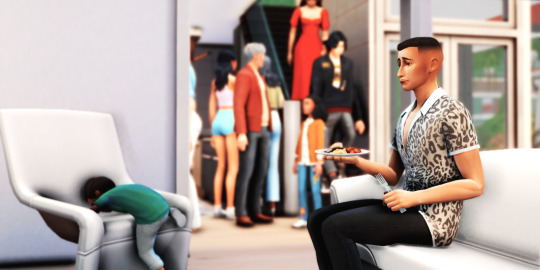
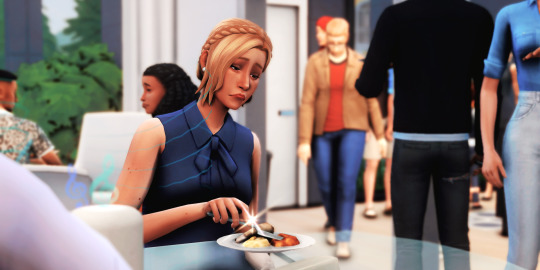

Instead of a somber funeral, the Canfields held a celebration of life for Cedric. (Admittedly, it wasn't much more cheerful than a funeral, but at least there was copious amounts of food.)
#ts4#simblr#sims 4#ts4 gameplay#100 baby challenge#100bc: gen2#100bc: gen1#canfield#everly canfield#jamison canfield#paula canfield
2 notes
·
View notes
Text



Late one night, Paula got word that her older brother Cedric passed away in a house fire. Cedric is the first of Colette's descendants to pass, but at least he can rest easy knowing he did "not go gentle into that good night".
#ts4#simblr#sims 4#ts4 gameplay#100 baby challenge#100bc: gen2#100bc: gen1#there is some poetic irony to cedric dying first. and in a house fire no less.#paula canfield#cedric canfield
6 notes
·
View notes
Photo







Since I threw the whole “don’t touch game genetics” thing out the window a long time ago, I’m fixing up Gen 1′s faces. Improvements were made.
Whitney - bigger lips, fixed eyebrows
Chelsey - mainly fixed her profile; shifted her face forward, gave her a chin, lowered her lips and browbone, new facemask
Cedric - ...pretty self-explanatory; new chin, new eyebrows, new hair, slightly smaller eyes, shifted his whole face down
#ts4#simblr#sims 4#100 baby challenge#100bc: gen1#whitney canfield#chelsey canfield#cedric canfield#canfield
25 notes
·
View notes
Photo




#ts4#simblr#sims 4#ts4 gameplay#100 baby challenge#100bc: gen1#adrian canfield#don lothario#cedric canfield#eduardo camarena#hana takeuchi#alexander goth#macie raha#canfield#lothario#camarena
23 notes
·
View notes
Photo

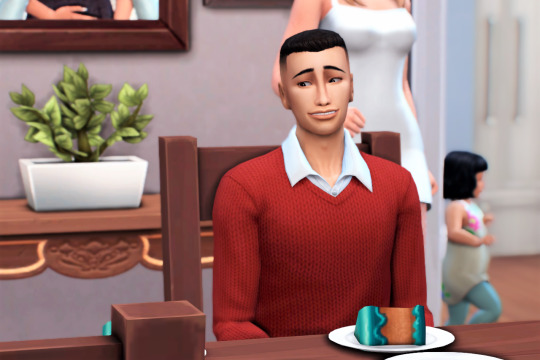

Jamie’s trying to fit in with the big boys.
#ts4#simblr#sims 4#ts4 gameplay#100 baby challenge#100bc: gen1#cedric canfield#alexander goth#matteo canfield#jamison canfield#canfield
17 notes
·
View notes
Photo






yearbook challenge by @bauhauzzz 🎓
just a challenge to brush off the dust of that old yearbook and show the world how your oc or ocs looked when they were teenagers! were they edgy? were they more on the nerdy side? you can share as many pics as you’d like but please if you do join I’d love to see your entries, so tag your posts using the tag #yearbookchallenge and have fun!
tagged by @natolesims
already shown baby maddison and baby katlyn and looong time ago, but here are the rest of the og 6 babies! they mostly look like their current selves, except whitney was *cough* experimental...
#ts4#simblr#sims 4#yearbookchallenge#natolesims#i just wanna squish all their cheeks#100 baby challenge#100bc: gen1#*inhale*#maddison canfield#lukas canfield#whitney canfield#chelsey canfield#cedric canfield#katlyn canfield#canfield
12 notes
·
View notes
Photo



#ts4#simblr#sims 4#ts4 gameplay#100 baby challenge#100bc: gen1#*inhale*#everly canfield#jamison canfield#nora blanton#hana takeuchi#brody canfield#adrian canfield#cedric canfield#colt goth#maddison canfield#pierce blanton#lauren canfield#canfield#blanton
15 notes
·
View notes
Photo




Time for the birthday festivities to begin!
#ts4#simblr#sims 4#ts4 gameplay#100 baby challenge#100bc: gen1#jamison canfield#colette canfield#addyson caron#cedric canfield#colt goth#stacy goth#canfield#lothario
14 notes
·
View notes
Photo







Graduation ~ [2/5]
#ts4#simblr#sims 4#ts4 gameplay#100 baby challenge#100bc: gen1#100bc: gen2#*inhales*#adrian canfield#ariel canfield#jamison canfield#addyson caron#hana takeuchi#colette canfield#chelsey canfield#katlyn canfield#cedric canfield#maddison canfield#stefan estep#canfield
14 notes
·
View notes
